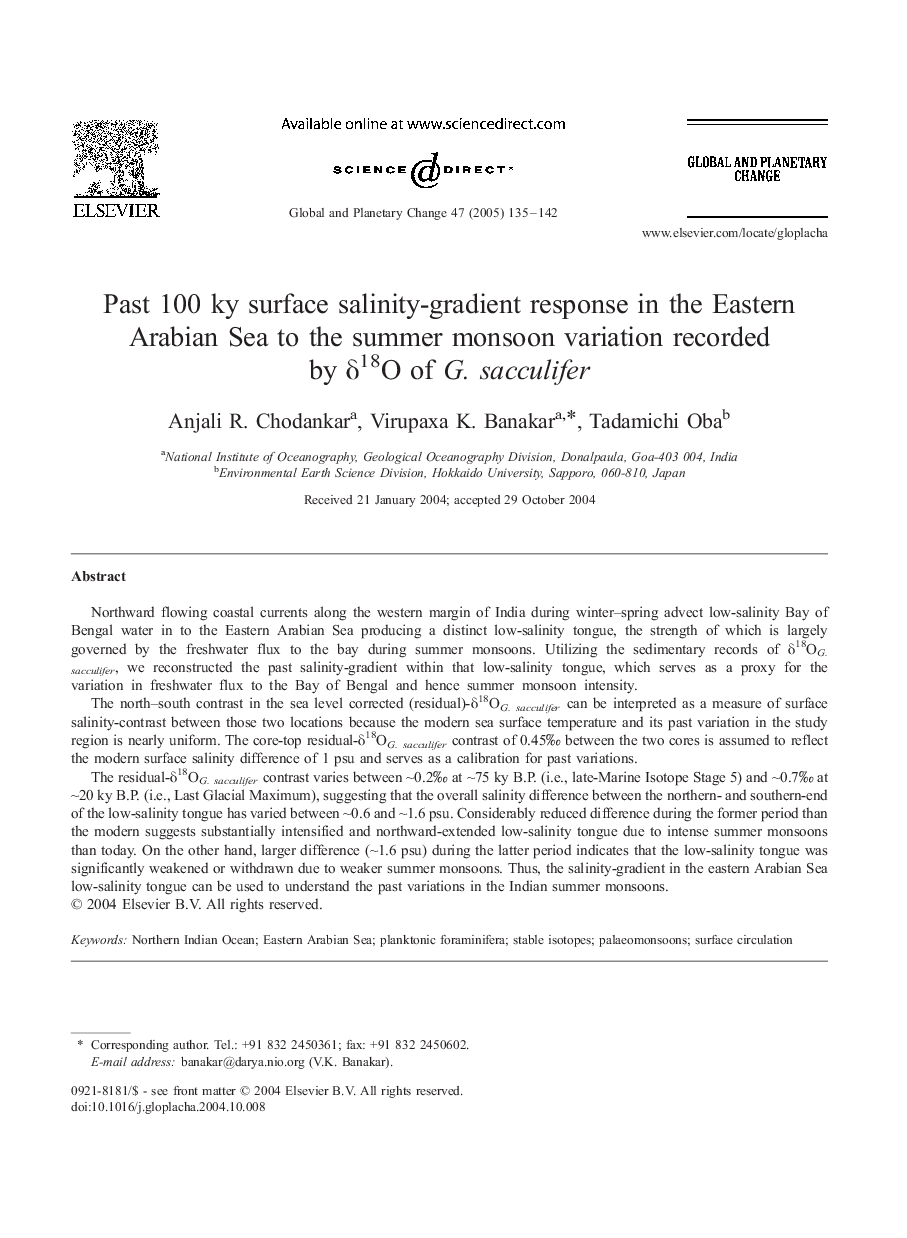| Article ID | Journal | Published Year | Pages | File Type |
|---|---|---|---|---|
| 9462553 | Global and Planetary Change | 2005 | 8 Pages |
Abstract
The residual-δ18OG. sacculifer contrast varies between â¼0.2â° at â¼75 ky B.P. (i.e., late-Marine Isotope Stage 5) and â¼0.7â° at â¼20 ky B.P. (i.e., Last Glacial Maximum), suggesting that the overall salinity difference between the northern- and southern-end of the low-salinity tongue has varied between â¼0.6 and â¼1.6 psu. Considerably reduced difference during the former period than the modern suggests substantially intensified and northward-extended low-salinity tongue due to intense summer monsoons than today. On the other hand, larger difference (â¼1.6 psu) during the latter period indicates that the low-salinity tongue was significantly weakened or withdrawn due to weaker summer monsoons. Thus, the salinity-gradient in the eastern Arabian Sea low-salinity tongue can be used to understand the past variations in the Indian summer monsoons.
Keywords
Related Topics
Physical Sciences and Engineering
Earth and Planetary Sciences
Earth-Surface Processes
Authors
Anjali R. Chodankar, Virupaxa K. Banakar, Tadamichi Oba,
